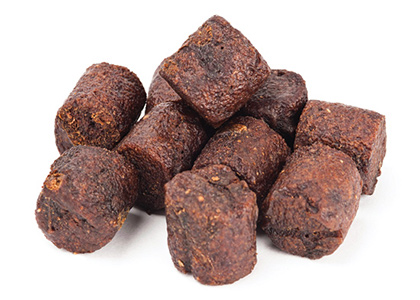
Catfish can smell and taste the difference between a creek chub and a baby carp at 50 paces. In rivers, current carries both attractive and displeasing scents and tastes to catfish. In still water, catfish tend to move more, sampling the water for potential food. They disregard most sensations, just as our ears, eyes, and noses tune out most incoming stimuli.
The catfish baits that grab their interest are preferred prey or certain flavors that may hold innate attraction for certain catfish species. Channel catfish are omnivores, consuming nearly all forms of animal and vegetable matter of appropriate size. Yet all savvy catmen know that the right catfish bait can mean the difference between a few fiddler cats and loading the boat.
When choosing the best catfish bait, one constant question is whether to use a whole live critter, cut sections, or some type of artificial. Many predators at times clearly prefer active livebait. Among catfish, flatheads, particularly big ones, often prefer livebaits that live for hours on the hook and struggle to escape.
However, worms and cutbait catch catfish, too, as do home-brewed stinkbaits vile enough to turn a vulture’s stomach. Dips, doughs, chunks, and other prepared baits offer convenience, reduce waste, and increase your catches. Different species of catfish prefer specific meals. Many different types of catfish baits ranging from chicken liver to cut shad to clams and small bullheads. Shrimp are a good options some days, but so can the smelliestest dip bait you can buy.
That said, certain baits consistently produce more catfish throughout the year. Here’s a look at some of the best catfish baits!
1. Nightcrawlers

Nightcrawlers remain a great bait for all cats, sometimes unequaled for channel cats. Even the biggest cats can’t resist worms. Drift ’em, float ’em, or bottom rig ’em. A ball of about six crawlers on a 3/0 hook is a fine bait for flatheads early in the season. The aroma and wriggling action seem to attract the big cats. In Kansas reservoirs, catmen dabble treble hooks adorned with several juicy crawlers for spawning flatheads, targeting undercuts and rock crevices along riprap walls where cats have holed up.
Catalpa worms are a highly regarded bait in parts of the South, where they’re common. These meaty green worms apparently become a focus for many fish species, where they feed on lakeside trees and tumble into the water. Freeze them for future use. The worm’s flavor is said to be so irresistible that the essence of catalpa or crushed worms is added to some commercial pastebaits.
2. Berkley Gulp! Catfish Shad Guts
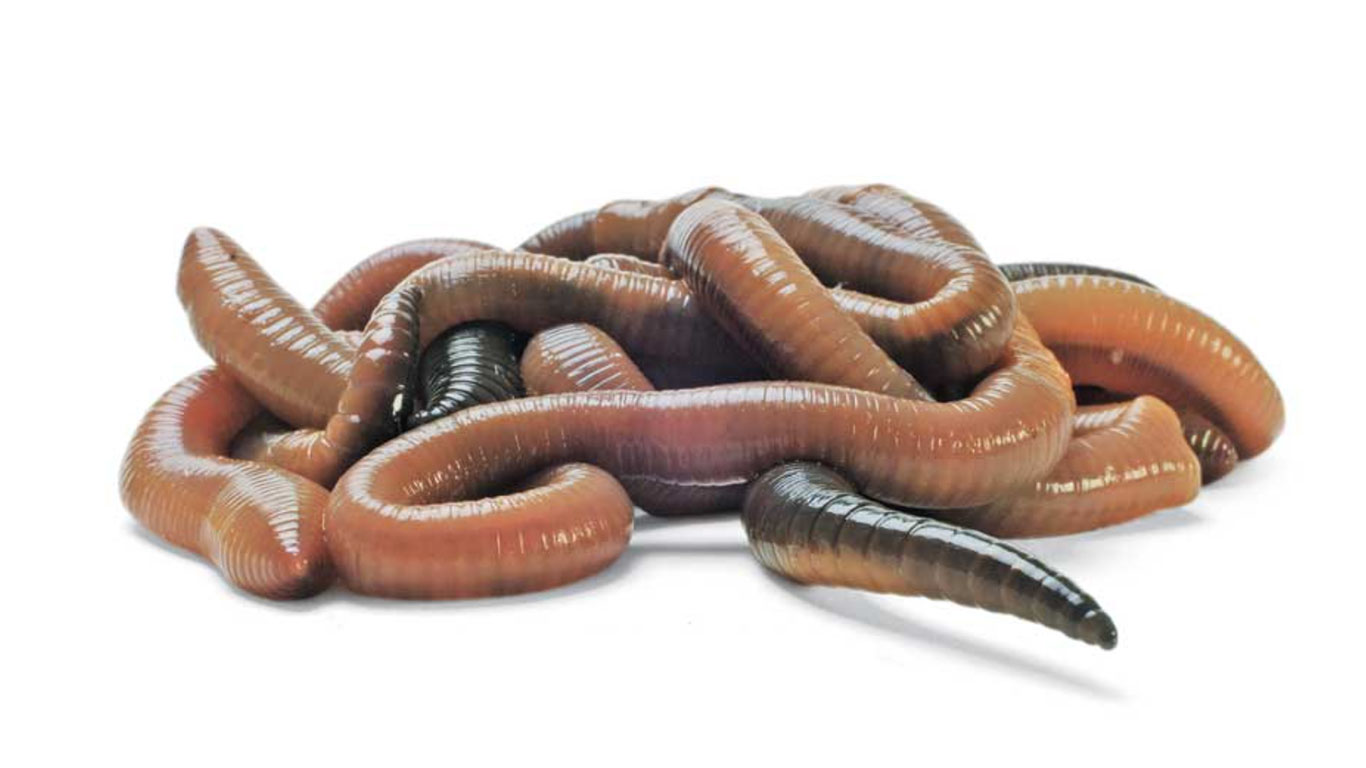
Sporting random intestinal shapes, realistic bloody colorations, and patented Gulp! fish-attracting scent, these fake guts put an end to scooping the innards out of hapless shad to sucker hungry cats. Just glom a gob around a 1/0 to 4/0 treble or baitholder, secure it on the barbs, and you’re set. Available in 1.2-ounce, re-sealable packs.
3. The Kermit Factor
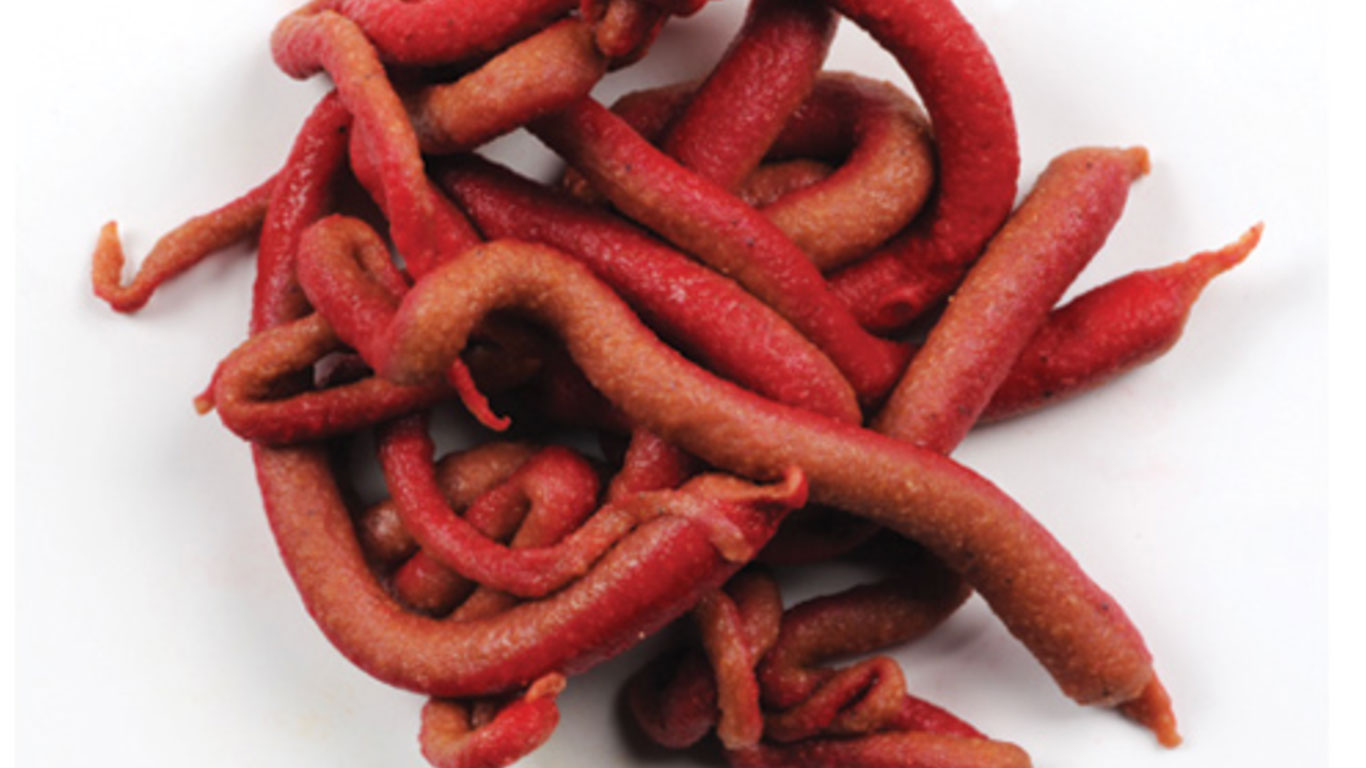
The unwary mouse that falls from a vine over a catfish hole has made its last mistake. We sometimes find rodents and snakes, as well as water-dwelling amphibians like frogs and salamanders, in the guts of catfish.
Frogs are locally popular and usually productive baits. They can be hooked through the nose or through one leg. Some anglers cut off the lower legs to make a more compact bait. Dead frogs usually work as well as live ones. As with fish and crayfish, cutting or crushing them allows the attractive amino acids to flow toward the catfish’s sensitive olfactory and taste organs. Forget tadpoles, though. They apparently secrete a substance or aroma that’s noxious.
The leopard frog is one of the most widely distributed frog species and the one most commonly used for bait. Leopard frogs mate in early spring, leaving clutches of eggs clinging to submerged vegetation in ponds and river backwaters, before moving to adjacent meadows and other grassy areas for the summer. With the exception of occasional visits to lakes and rivers, catfish rarely encounter leopard frogs during summer.
As the days become shorter and air temperatures cool in early fall, leopard frogs begin to congregate and prepare for winter. They gather in staging areas adjacent to water, particularly during periods of cool, rainy weather. One clue that this fall migration is underway is increased numbers of road-killed frogs. Once nighttime temperatures approach the 50F range, frogs begin moving toward lakes and rivers where they’ll spend the winter.
Such an abundant food source rarely goes unnoticed, and catfish often cruise shallow flats where leopard frogs make brief forays into the water during the first few hours of darkness. As the water continues to cool, frogs gradually spend more time in the water than on land, providing increasingly better feeding opportunities for prowling cats. Fish continue to consume other live or dead prey when the opportunity arises, but using frogs makes sense when they’re so abundant.
Catfish take advantage of any food seasonally available, though there’s no denying the appeal of human food like hot dogs. Still, wild-grown baits natural to the system and familiar to the fish, or commercial baits that duplicate them, work best most of the time.
4. Berkley PowerBait Catfish Chunks

Studies in simplicity, these cubes are easy to fish. But more importantly, they’re formulated by Berkley’s scientists to tempt catfish three times faster than standard doughballs. Available in liver, blood, and fish flavors, in 6-ounce packages
5. Catfish Charlie’s Dip Bait
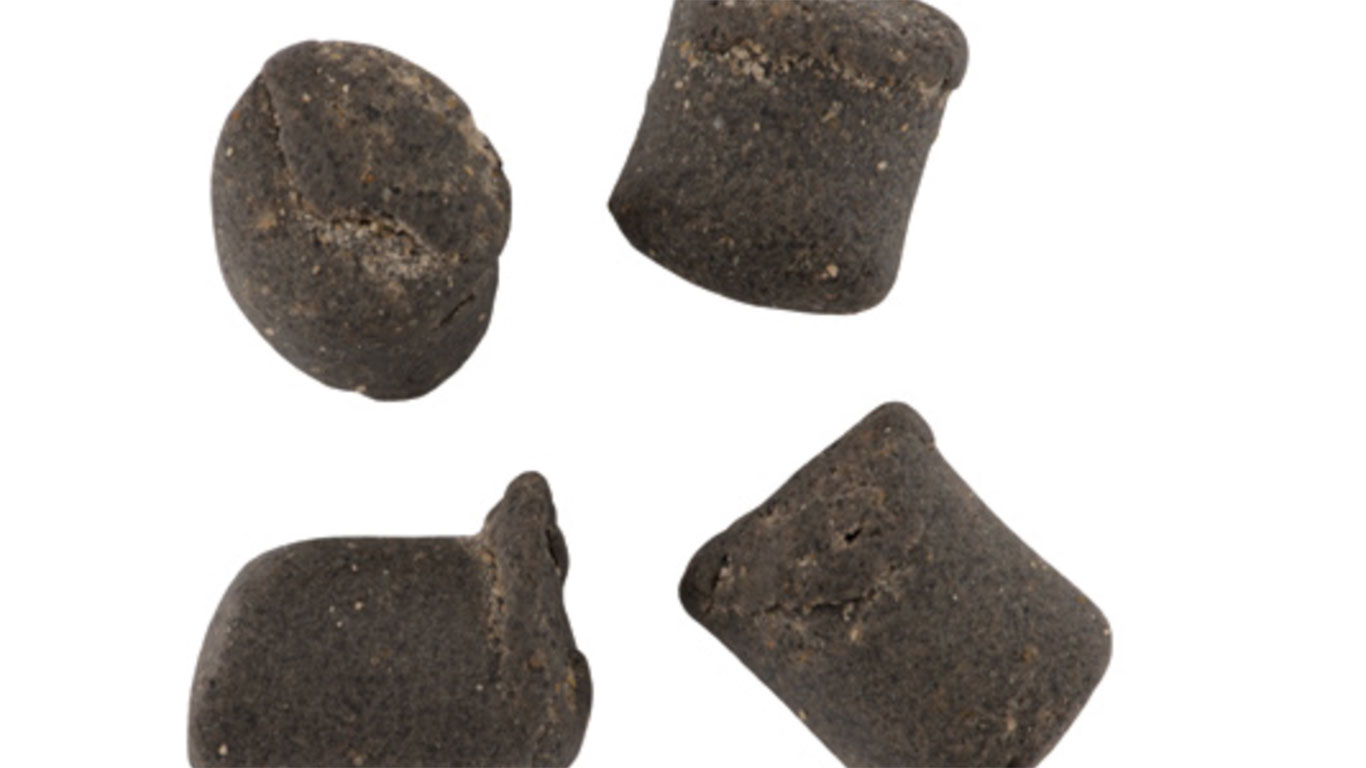
An extra-sticky dip, Charlie’s molds on and sticks to hooks, tubes, worms and other baitholders with ease. Available in 12- and 36-ounce tubs, in cheese, blood, and shad variations. As with other dip baits, Charlie’s shad flavor is particularly productive in cool water. 641-673-7229
6. Crayfish
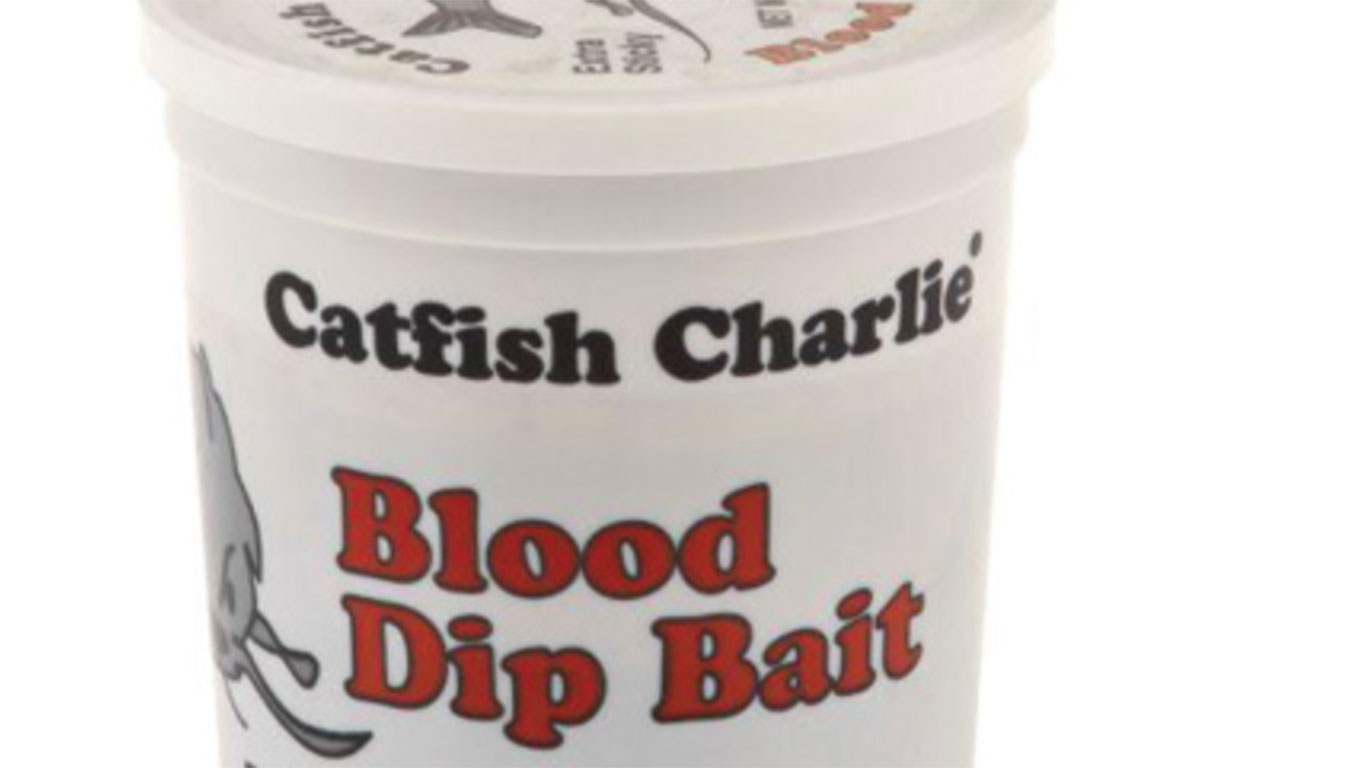
Flathead catfish share with bass an innate love of crayfish. Often just rubbing a cat’s belly reveals their lumpy remains. Tail-hook live craws and bottom rig them. But as flatheads grow, they’re less likely to take these smaller baits, or maybe they have a harder time beating their 5- to 10-pound kin to the forage.
Crayfish are easy to catch, and the best time to collect them may coincide with the best catfishing. Crayfish usually hold under rocks or other cover during the day, then emerge to consume whatever living or dead prey they can find after dark. Chub creeks and bullhead ponds usually hold good numbers of craws, which are easily located and captured with the aid of a headlamp and long-handled dipnet. Wire minnow traps baited with a piece of dead fish are excellent craw catchers on any water with a decent crayfish population.
For channel cats, craw tails make a fine bait for bottom drifting or float-fishing in summer. When using a whole craw, try crushing the head a bit to release those tasty brain morsels that Cajun crawdad fans can’t resist.
Catfish eat clams – freshwater mussels, Asiatic clams, snails of various sorts, even zebra mussels. Blue cats are notorious for foraging on mussel beds. Shake their bellies and you can almost hear the shells rattling. Food habits studies suggest that blue catfish feed on mussels more readily from spring through fall, especially in more southerly reservoirs, with blues turning almost exclusively to shad when they become more lethargic and vulnerable in cold water.
7. Bowker’s Catfish Bait
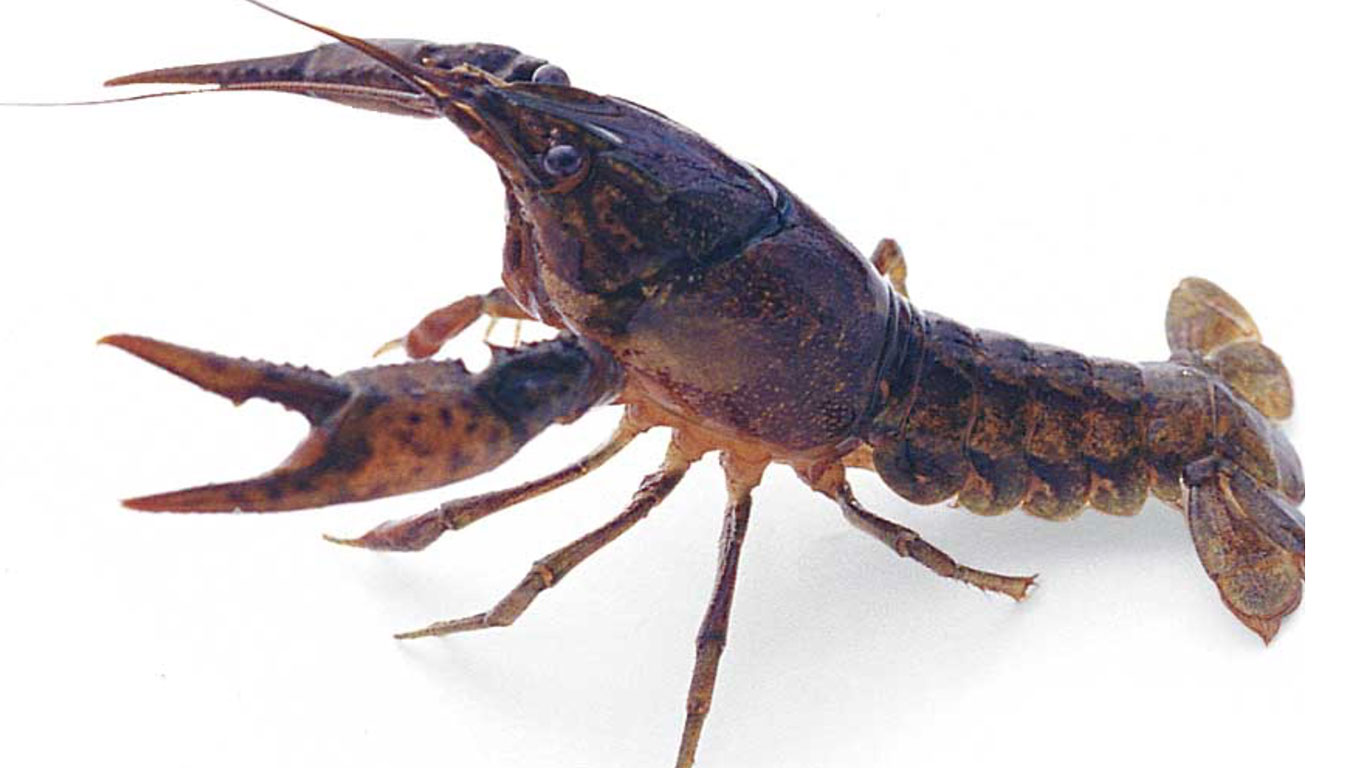
A staple of diehard catmen for decades, Bowker’s dip excels on dip worms, tubes, and sponge strips, which the company also carries. You can also coat natural baits such as shrimp with it for extra flavor. It’s available in original, blood-, shrimp-, and shad-added versions, which let you tailor taste to season and conditions. The blood bait, for example, is deadly on dog-days channels, while the shad scent shines in cool water after ice-out.
8. Doc’s Catfish Bait
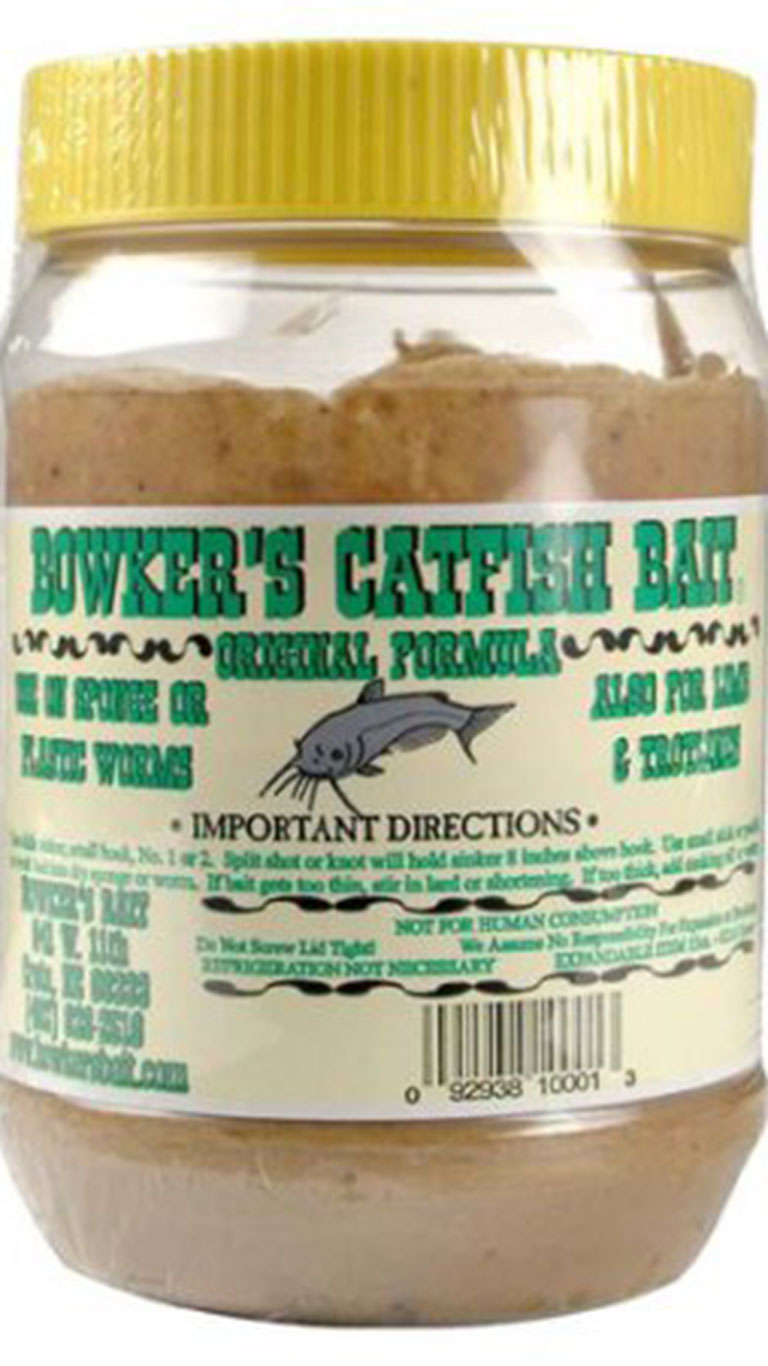
On the cat scene since 1927, Doc’s knows a thing or two about stinkbait. Which explains why the company offers three temperature-driven dips – an extra-stiff blend for hot weather, an original mix for temps of 70 to 90 degrees, and a cool-weather concoction for temperatures below 70. All are available in 12-ounce, 40-ounce, and gallon-sized containers, in cheese and blood flavors, while liver is an option with the original, in 12-ounce cans only
9. Livebait
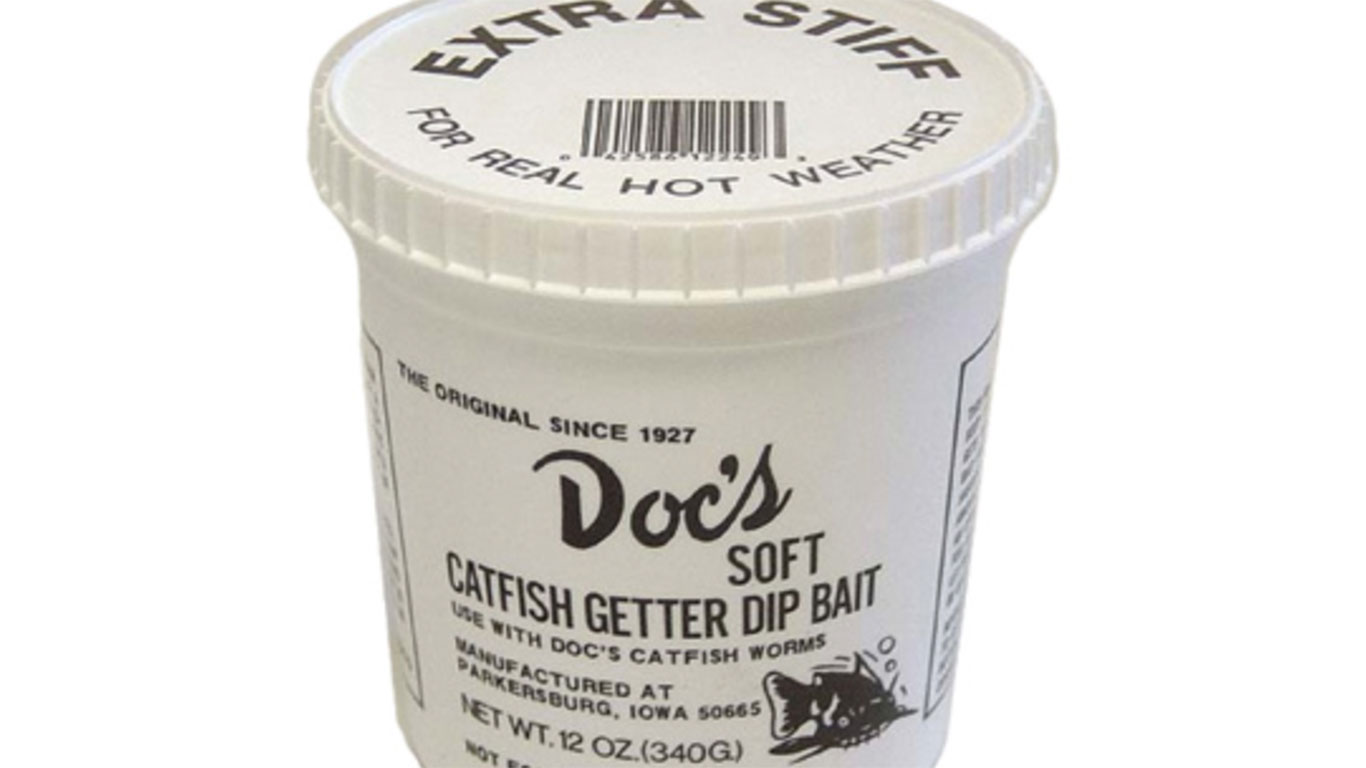
Across North America, white suckers are a can’t-fail bait, as this most common species is suitable in size for yearling channel cats and up to 40-pound flatties. Slice ’em and dice ’em for float or bottom rigging for blues and channel cats, or tail-hook a 2-pounder to lure a mother flathead from her lair.
Note the difference, though, between pond-raised bait suckers and wild ones. Cultured baits don’t flee, a movement that often triggers a lethal attack from a predator. Seine baits or catch suckers on live worms, instead. We’ve found that keeping pond-raised suckers in a tank with a big flathead quickly trains the suckers in survival, making them better baits.
Smaller members of the catfish clan – stonecats, madtoms, and bullheads – make excellent baits. Indeed, studies of catfish show these species can be cannibalistic. In some waters where flatheads have been introduced, bullhead populations have plummeted.
Young carp, for example, are gourmet fare for big flatheads, who may follow them onto flooded pastures at night.
The closely related exotic goldfish also makes a fine bait on setlines or rod and reel. Surprisingly, cut carp doesn’t rank nearly as high for channel, white, or blue cats. As a caution, be sure to check state regulations on which baits are legal and how they may be obtained. Rules vary.
Wherever gizzard and threadfin shad abound, catfish prey on these aromatic, abundant species. Catfish guides on Santee-Cooper and many other southern reservoirs use cast nets to gather a tank full of livebait to start the day. Skewering several 4-inch threadfins through the eye socket provides a tasty bait for channel cats, blues, and flatheads. Cutting larger gizzard shad in half and rigging them on the bottom also brings action.
In early spring and fall, 3-inch shiners and redtail chubs from bait shops make fine baits for channel cats. These selections follow the general rule: Smaller baits in colder water, big stuff for summer nights.
Sunfish make great baits, remaining lively on the hook and attractive when cut. Toughest and liveliest of all is the green sunfish, a prime flathead bait on line or rod and reel. Bluegills, pumpkinseeds, redears, and the rest of their clan are appetizing, too.
10. Magic Bait Hog Wild Catfish Dip Bait
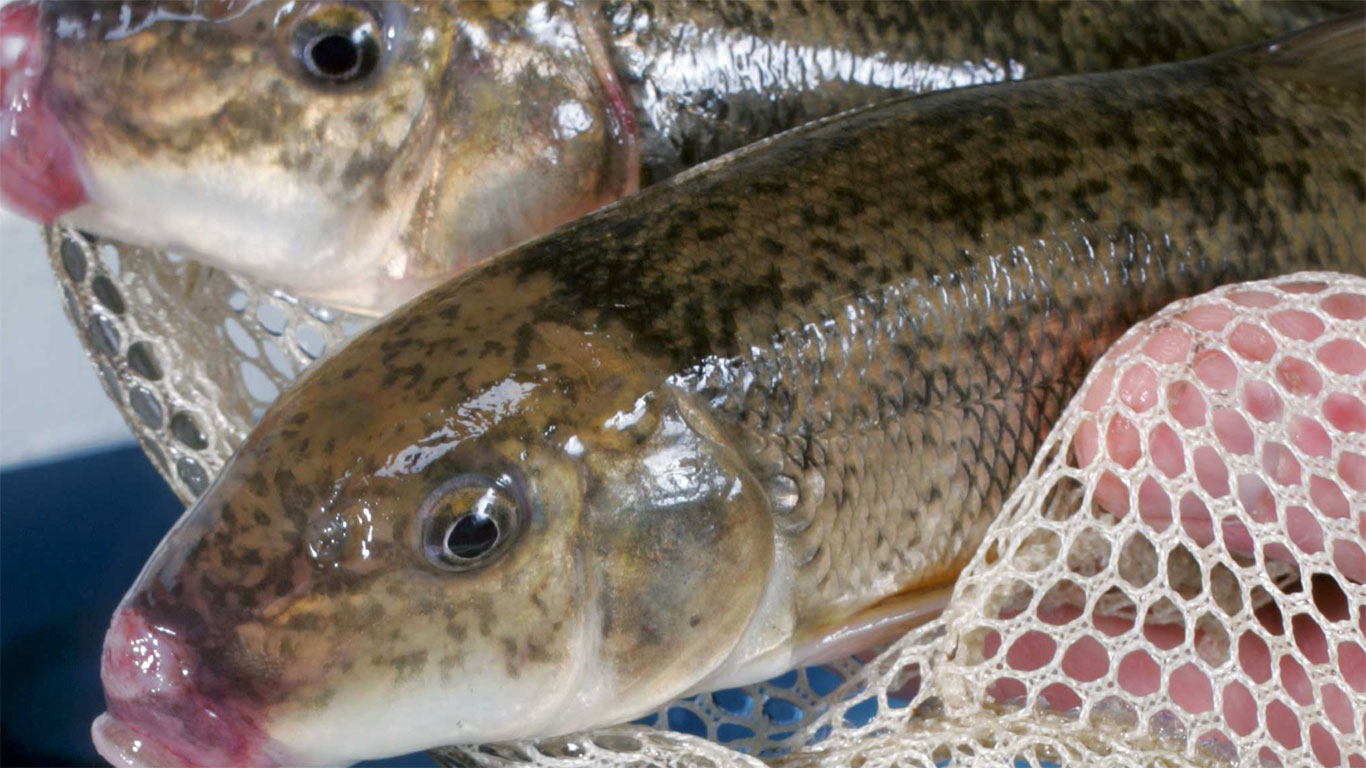
Cat fans seeking traditional thin, fast-oozing stinkbait will appreciate Hog Wild’s ability to quickly infiltrate the water column with cheese, blood, and shad-based aromas. Available in pint-size jars, it’s a natural for tubes, sponges, netting, and similar delivery systems, but also shines for giving dough baits an upgraded coating.






![Air gun 101: The differences between .177 & .22 – Which jobs they do best ? [Infographic]](https://airgunmaniac.com/wp-content/uploads/2020/09/g44-218x150.jpg)



































